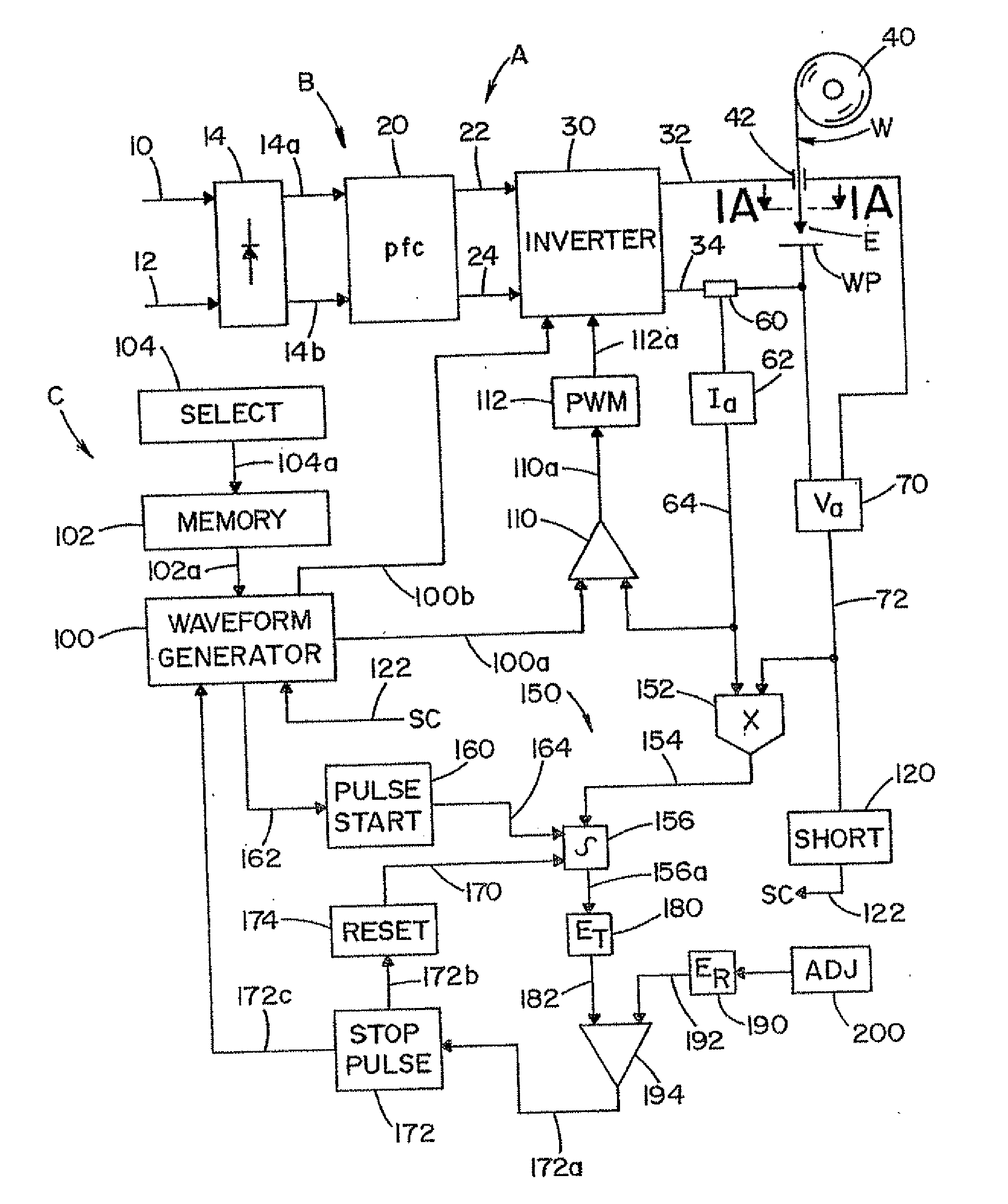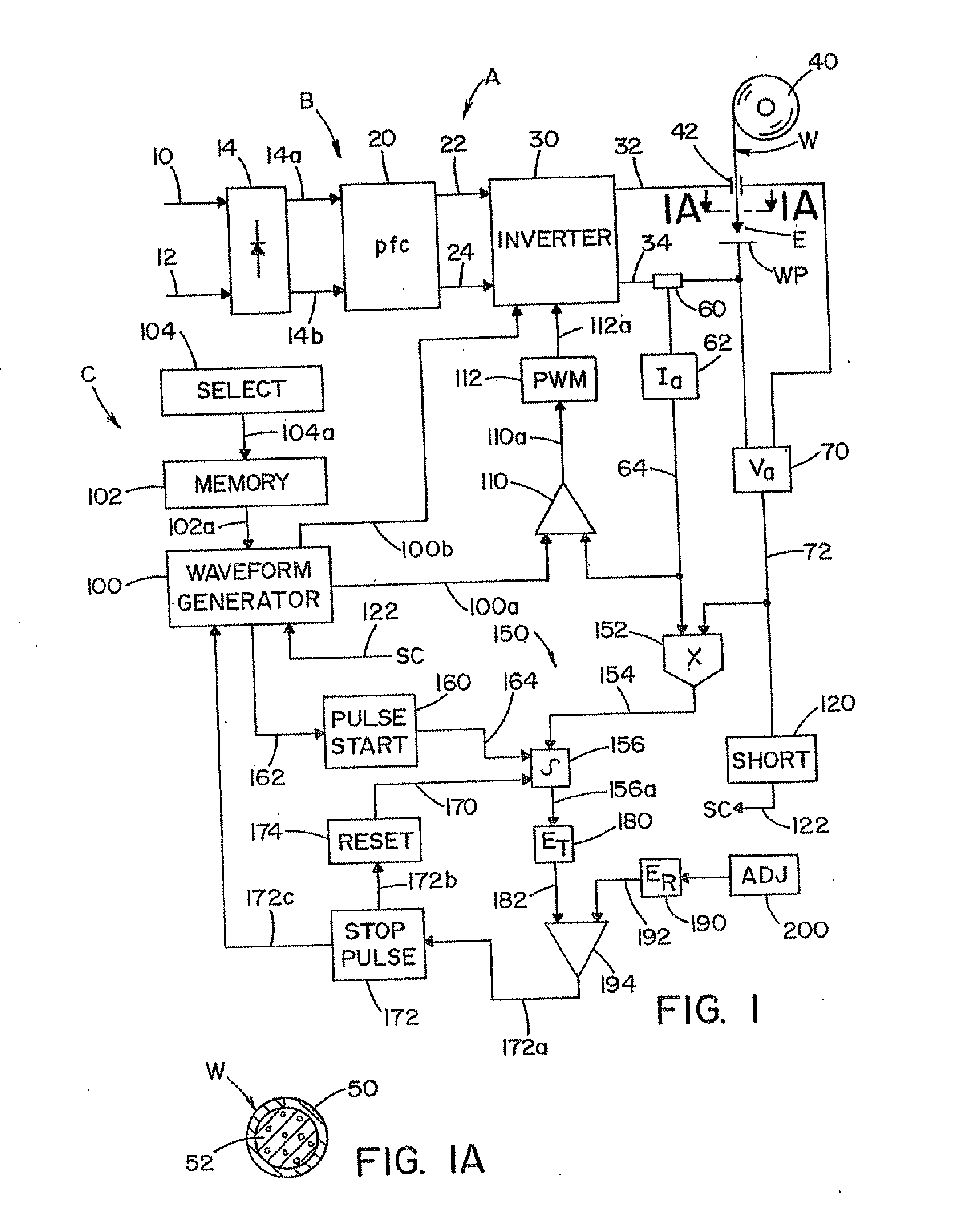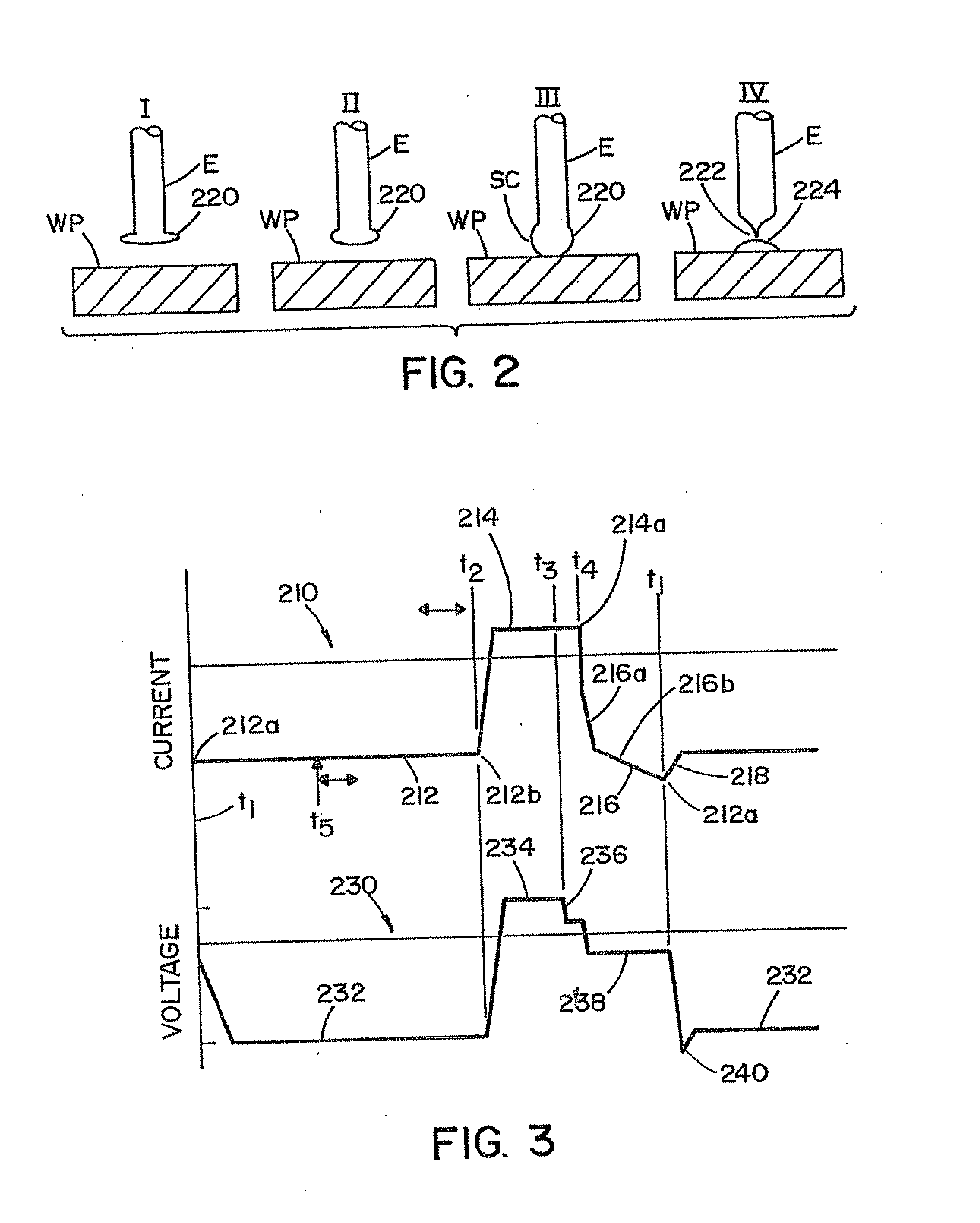Gas-less process and system for girth welding in high strength applications including liquefied natural gas storage tanks
a gas-less, high-strength technology, applied in the direction of welding apparatus, manufacturing tools, other domestic objects, etc., can solve the problems of adverse effects of brittleness of welds, inherent limitations of gas-less or self-shielding welding applications, and no commercial solution or method for semi-automatically, circumferentially, etc., to achieve short arc length, reduce the effect of contaminating the weld from the atmosphere and reduce the effect of contamin
- Summary
- Abstract
- Description
- Claims
- Application Information
AI Technical Summary
Benefits of technology
Problems solved by technology
Method used
Image
Examples
example
[0101] The following discussion is directed to an example of the present invention. The present invention is not limited to the embodiment and results discussed below, but the following discussion is provided to demonstrate the results achievable from an exemplary embodiment of the present invention.
[0102] A series of test welds were made using an embodiment of the present invention, in which a self-shielded, flux cored electrode was used in a short arc welding process. In some tests a 0.062 inch diameter Lincoln Innershield NR-233 was used. The welds were made at a constant wire feed speed and travel speed. The welds were bead on plate welds, having three passes side-by-side, then two passes side-by-side in a second layer on top of the first three passes. The plate surfaces were shot blasted prior to welding to remove scale and dirt. The weld metal layer in the second layer was analyzed for nitrogen content. Because no nitrogen was intentionally incorporated in the electrodes used...
PUM
| Property | Measurement | Unit |
|---|---|---|
| Charpy V-Notch toughness | aaaaa | aaaaa |
| tensile strength | aaaaa | aaaaa |
| tensile strength | aaaaa | aaaaa |
Abstract
Description
Claims
Application Information
 Login to View More
Login to View More - R&D
- Intellectual Property
- Life Sciences
- Materials
- Tech Scout
- Unparalleled Data Quality
- Higher Quality Content
- 60% Fewer Hallucinations
Browse by: Latest US Patents, China's latest patents, Technical Efficacy Thesaurus, Application Domain, Technology Topic, Popular Technical Reports.
© 2025 PatSnap. All rights reserved.Legal|Privacy policy|Modern Slavery Act Transparency Statement|Sitemap|About US| Contact US: help@patsnap.com



